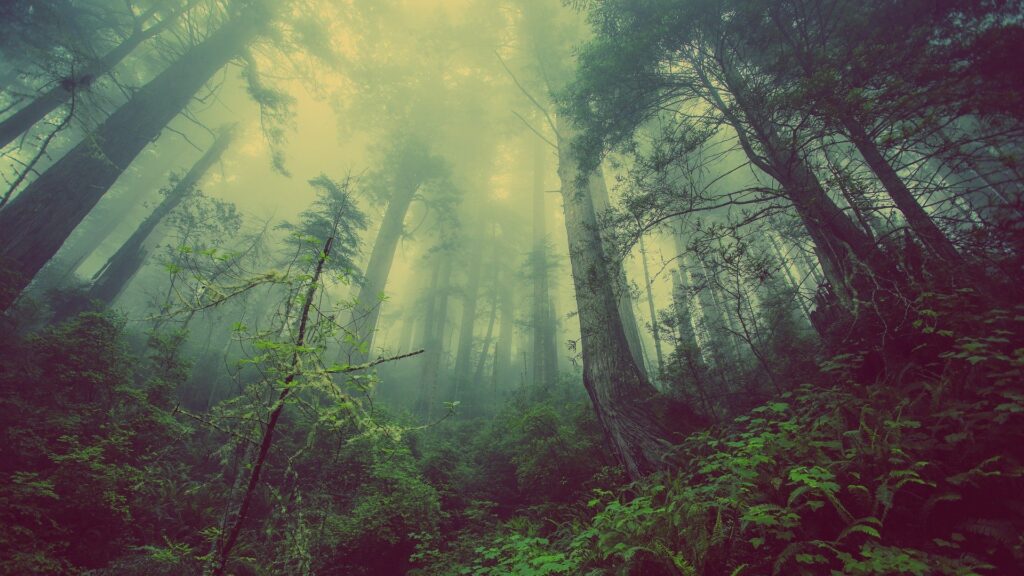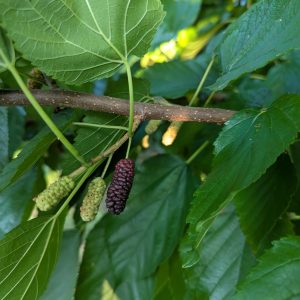If you plant trees in a pasture, you can kiss your sweet, lush, beautiful forages goodbye.
Or so the fear goes.
When talking about trees and pastures (which I tend to do a lot), there is one main hesitation that comes up again and again: “Won’t that hurt my forage production?” If you’ve read anything on silvopasture (the intentional management of livestock, forages and trees), you may have had the same question. For a grass farmer who relies on forage production to feed their animals (and hence, their family), maintaining high rates of forage production is a top priority. Anything that would interfere with that is justifiably questioned. As I’ll share, not only can trees add significant amounts of feed for your livestock, both during the summer and winter when cool-season forages aren’t growing, but when managed correctly, they can increase the growth of your grasses, forbs and legumes.

One of the major challenges in adding trees to your pastures is the utter lack of good examples to follow. There are examples out there all right, but most are crappy. Two scenarios are common. In one scenario, one lone tree is supposed to provide shade for the whole herd, so that all summer long, you can find cattle bunched up underneath those that tree, concentrating all of their manure and impact in a tiny fraction of the pasture. To add insult to injury, with that kind of chronic impact, the tree usually dies within the decade.
The second scenario we’re all familiar with is that of cattle ‘grazing’ in the woods. Now, the woods are a great place to find relief from the hot summer sun, but unless there’s been a good thinning, there’s very little to be eaten. While the cattle may be cool, you’ll likely end up feeding them hay, not the most profitable chore in the world. For good reason, you’re not looking to replicate deep forest conditions throughout your farm.
The phrase “It’s not the cow, but the how” has become a useful shorthand for pointing out the difference between raising livestock in a poor way (overgrazing, never rotating, etc.) and livestock managed well. Perhaps when it comes to trees, the phrase should be “It’s not the tree, it’s me”. In the end, you have control over how to use trees on the farm. You could, of course, create a deep, dark forest if you so desired. But assuming you don’t, you could just as well create a tree system that fits your needs just right, reducing heat stress for your livestock and cool-season forages, adding fertility to the soil, dropping high-energy feed as winter stockpile, etc. And as we’ll see, you don’t have to lose any forage production.

Rather than take my word for it, let’s look at what researchers have found when studying forage yields under shade. The best work on the topic of shade in pastures has most likely been done by the folks at Virginia Tech, where silvopasture systems have been researched for several decades.
Now, in the interest of not putting you to sleep, I won’t go into all the detail here. If you’re like me, and reading about this stuff actually keeps you awake at night, you can find links to the original papers below. There’s plenty there to dive into, but way too much to cover in this article.
The first study we’ll look at was simple: Make some big frames with slats to produce shade at different levels (30%, 50%, and 70%), put them in a pasture, and measure the forage production under them. What they found likely won’t surprise you. At 70% and 50% shade, forages didn’t grow as well as in the control (no shade). However, at 30% shade levels, the annual forage production was the same as for forages out in the open. No yield reduction, despite less sunlight available to the forages. Interestingly, in the 30% shade treatment, the researchers measured somewhat lower yields in spring and fall compared to the open plots, but higher yields during the summer. Said another way, they saw more steady forage growth throughout the year, with fewer peaks and slumps in production.

The second study we’ll look at is even more useful, since it looks at an actually silvopasture system with trees, as opposed to an artificial system created by using shade structures. This means there were more real-world factors at play, like competition for water, tree-induced microclimate, etc.
The setup was as follows: Forages were regularly harvested from designated plots in a 7-year old silvopasture system, where trees had been planted at high, moderate, and low densities. While no precise values were given for exactly how much shade was being cast in each treatment (say 30% vs 50%), the ‘low’ shade treatment had very few trees, and was very similar to an open pasture. The forage grown in each of the treatments was harvested and measured over the course of two growing seasons, then compared to one another.
These results might well surprise you. Forage production actually increased under moderate levels of shade, and not by a tiny amount. Across both years of the study, yields were 16% greater at medium density (6130 kg/ha) compared to forage yields at low shade density (5280 kg/ha). It turns out it’s not only livestock that suffer from heat stress, but forages do as well. The researchers believe that high temperatures were what hurt production in plots with too little shade, while the deep shade meant nice temperatures, but too little light. Right in the middle, they found a happy Goldilocks zone.

This may not seem intuitive if you were taught that plants are all just ruthlessly competing for resources. But nature is complex, and there’s a lot going on. Besides cooling the ground, shade also reduces evaporation from the soil, meaning water is retained for longer. Dew stays on plant longer under shade, giving some access to water even when the rains don’t come. While some of a tree’s roots do indeed compete with the roots of grasses for water, a good deal of their root system is deeper than grass roots. Then there is the process of hydraulic lift, whereby trees can transfer water from deep and moist soil horizons to shallow soil in drought times, where forages can tap into the water. The trees don’t do this out of altruism, but because if the soil around their fine roots at the soil surface was bone-dry, those roots would shrivel and die. Yet whether through altruism or self-interest, the result is that more water is kept in those upper soil horizons, allowing forages to hold on longer into droughts.
I hope this idea, of trees and forages coexisting and even complimenting one another, becomes more intuitive in the years to come, and that graziers successfully learn to skillfully use trees and shrubs as just more tools in their toolboxes.
You already know that using a mixture of grasses, forbs and legumes will give your farm better results than using only one grass or one legume everywhere. You know that cattle, sheep, goats and chickens will all use different parts of a pasture, and that running them all would allow you to raise more animals per acre than if they were all separate. And you know a farm business runs best when someone is good with animals and someone with forages, someone is good with numbers and someone is good with tractors. By learning to use the whole range of plant tools that nature has to offer us, including grasses, forbs, legumes, trees and shrubs, you are creating powerful and profitable synergies that will get better, and better, and better, year over year over year.




